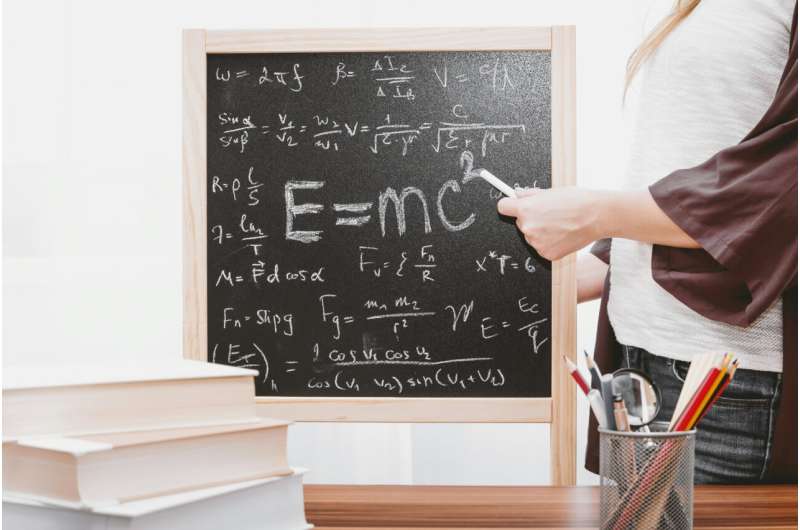This article has been reviewed according to Science X's editorial process and policies. Editors have highlighted the following attributes while ensuring the content's credibility:
fact-checked
trusted source
proofread
Research highlights power of interactive, gesture-based lessons when teaching abstract math concepts

Researchers at Colorado State University are exploring how non-verbal communication could be leveraged by faculty to reach educational goals and support individual learning around abstract math concepts.
The work is led by Professor Hortensia Soto and described in a new paper published in Problems, Resources, and Issues in Mathematics Undergraduate Studies (PRIMUS). The paper showcases how gestures and body language can be used to explain abstract algebraic ideas that may be difficult for students to engage with through formal teaching methods.
The work expands Soto's research into embodied cognition in mathematics education—using physical gestures along with speech to support students in developing and communicating meaning. To explore that concept in the paper, Soto and her team studied the ways teachers and undergraduate students interacted in an abstract algebra classroom setting that prioritized two-way participation and non-verbal communication.
The paper studies how the resulting organic interactions across the classroom focused attention on key concepts while also promoting equity and supporting different learning needs.
"Part of this experiment was giving students space to feel free to comment with gestures—not just in writing or speaking but through their bodies," said Soto, who is part of the Department of Mathematics. "That was already happening in an organic way, but this work shows how teachers can interact with and re-enforce that instinct in students to support learning through multiple senses."
To illustrate this concept, Soto noted that many children are often taught that counting on their fingers is not the "right" way to do math. However, using fingers or other types of body movement can reduce the cognitive load required to learn something new, and it benefits students, teachers and even mathematicians. Similarly, incorporating physical materials into lessons can provide students with another medium that helps them express difficult to verbalize ideas.
The paper documents and explores these types of activities as the instructor invited students to participate through gestures or re-used a student's organic body language to help further the lesson. Soto said there is no single "right way" to integrate these kinds of activities into the classroom, but that they can be powerful tools to support learning and to communicate concepts.
"We convey information to others through the body before we speak. It is not until much later that we get symbols to write our thoughts and words out," she said. "Too often we start with a very formal way of teaching these concepts because that is how we were taught, and students may not be ready for it."
Soto said students that learn under this approach may or may not have a better understanding of the material in an assessment setting. Instead, she said the goal of this kind of approach was to support fluency around abstract concepts and to better prepare students to engage with the formal definitions, theorems and proofs that follow.
Alissa Romero, a co-author on the paper and graduate student at CSU, said the work held practical implications for teachers at any grade level and was not limited to just gestures.
"A teacher might also frame a mathematical idea in terms of everyday experiences before introducing a formal mathematical definition or theorem for example," she said.
Jessi Lajos is also a co-author on the paper and an assistant professor at Utah State University. Lajos said the instructor's attention to and use of embodiment in the classroom activities not only supported the student's ability to think abstractly, but also brought play and joy into the classroom.
Soto said the research shows that evidence of learning in the classroom doesn't have to look like something procedural or formal.
"Not everyone is ready for formalism, and teachers can create activities in their own ways that nurture what students are saying with their bodies," she said.
"It requires creativity and re-thinking around how we teach abstract math concepts, but you can start by letting them know that 'your gesture just told me something about what you understood.'"
More information: Hortensia Soto et al, Teaching Abstract Algebra Concretely via Embodiment, PRIMUS (2024). DOI: 10.1080/10511970.2024.2310235
Provided by Colorado State University





















